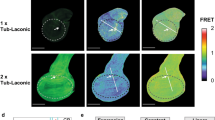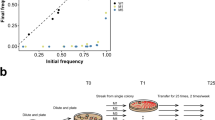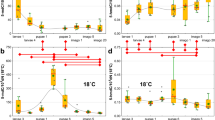Abstract
THE study of chemical mutagenesis has directed attention to the possibility that the so-called spontaneous gene mutations may in fact result from the accumulation of mutagenic substances arising as a consequence of normal metabolism. In bacteria, the spontaneous mutation-rate of dividing cells may be 40 times greater than that of non-dividing cells1. On the other hand, there does not seem to be any simple relation between mutation and cell division itself2. This may be interpreted to mean that, as a result of metabolic activity associated with synthesis and growth, chemical mutagens arise and may eventually react with the genetic material. The discovery of ‘anti-mutagens’3 would appear to support this hypothesis. An anti-mutagen might directly mop up traces of the mutagen, or it might initiate further biochemical reactions serving to divert the mutagen into alternative channels.
This is a preview of subscription content, access via your institution
Access options
Subscribe to this journal
Receive 51 print issues and online access
$199.00 per year
only $3.90 per issue
Buy this article
- Purchase on Springer Link
- Instant access to full article PDF
Prices may be subject to local taxes which are calculated during checkout
Similar content being viewed by others
References
Ryan, F. J., Genetics, 40, 726 (1955).
Novick, A., Brookhaven Symp. Biol., No. 8, 201 (1955).
Novick, A., and Szilard, L., Nature, 170, 926 (1952).
D'Amato, F., and Hoffman-Ostenhof, O., “Adv. in Genet.”, 8, 1 (1956).
Wolff, S., and Luippold, H. E., Science, 122, 231 (1955).
Conger, A. D., and Fairchild, Lucile M., Proc. U.S. Nat. Acad. Sci., 38, 289 (1952).
Wyss, O., Clark, J. B., Haas, F., and Stone, W. S., J. Bact., 56, 51 (1948).
Wagner, R. P., Haddox, C. H., Fuerst, R., and Stone, W. S., Genetics, 35, 235 (1950).
King, E. D., Schneiderman, H. A., and Sax, K., Proc. U.S. Nat. Acad. Sci., 38, 34 (1952).
Sobels, F. H., and Simons, J. W. I. M., Z. induk. Abst. Vererbungsl., 87, 735 (1956).
Alexander, Mary L., and Stone, W. S., Proc. U.S. Nat. Acad. Sci., 41, 1046 (1955).
Clark, A. M., Nature, 177, 787 (1956).
Sobels, F. H., Nature, 177, 979 (1956).
Sobels, F. H., Proc. 1st Int. Photobiol. Congress, Amsterdam, 332 (1954).
Daly, J. M., Arch. Biochem. Biophys., 51, 24 (1954).
Author information
Authors and Affiliations
Rights and permissions
About this article
Cite this article
CLARK, A. Genetic Effects of Carbon Monoxide, Cyanide and Azide on Drosophila . Nature 181, 500–501 (1958). https://doi.org/10.1038/181500b0
Issue Date:
DOI: https://doi.org/10.1038/181500b0
This article is cited by
Comments
By submitting a comment you agree to abide by our Terms and Community Guidelines. If you find something abusive or that does not comply with our terms or guidelines please flag it as inappropriate.



